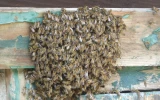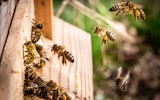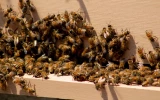Honey Bee Orientation Flights vs. Swarming: 8 Key Differences
Honey bee orientation flights and swarming are two processes with distinct differences. Both are essential activities that keep honeybees alive and their population thriving. Let's discover the importance of both behaviors and how they differ in honey bee colonies.
Honey bee orientation flights are a scout bee's way of learning the lay of the land and sharing it with the other bees in the hive. Swarming, however, is the instinctive behavior of a colony when it needs to find a new home. It involves the queen and many worker bees leaving the hive in search of a new place to live.
Orientation flights help virgin queens and workers orient themselves to their new homes, while swarming is a reproductive strategy used for colony multiplication and the formation of new colonies. Learn more about the key differences between honey bee orientation flights and swarming in this article.
Summary
- Honey bee orientation flights involve only a few bees, while swarming involves a larger number of bees.
- Honey bee orientation flights involve a calm, circular flight pattern, while swarming involves a chaotic flight pattern.
- Honey bee orientation flights involve the scout bees of the hive, while swarming involves the queen bee and a large group of worker bees.

On this page:
Differences of Honeybee Orientation Flights and Swarming
Honeybee orientation and swarming differ in many ways. Here are eight key differences to consider when comparing the two behaviors.
1. Duration of orientation flights and swarming
Honey bee orientation flights are an important part of bee life. These flights last for a few minutes and are a vital part of the bee's ability to find food sources, as well as build and maintain their hives. The orientation flights can last up to 45 minutes and have been observed to occur regularly in the morning and evening.
During swarming, the bees can fly for several hours or even days, until they find a suitable new home.
2. Number of bees in orientation flights and swarming
Honey bee orientation flights involve only a few bees who are scouting out potential new homes for the colony. In contrast, swarming involves a much larger number of bees.
A swarm occurs when a colony is too large for its current home and needs to split up and form two new colonies. A large swarm of bees can be seen flying in a large mass in the air. This process can involve hundreds or even thousands of bees and is a much more complex process than the orientation flights of a few scout bees.
3. Distance traveled with orientation flights and swarming
Honey bee orientation flights typically take the bees up to 500 yards away from the hive. This distance allows the bees to orient themselves to the surrounding environment and locate sources of nectar and pollen.
Honey bee swarms typically travel up to 3 miles in search of a new home. They usually don't travel farther than this, as they need to find a suitable home within a certain amount of time.
4. Purpose of orientation flights and swarming
Honey bee orientation flights are used to familiarize the bees with their environment and to help them find food sources and nesting sites. This helps them to recognize landmarks and familiarize themselves with their surroundings.
The orientation flight is an important part of the honey bee’s life cycle. It allows them to identify potential food sources and nesting sites that can be shared with the colony. The orientation flight also allows the bees to remember their route back to the hive and to spread the news about the food source to the rest of the colony.
The orientation flight is a key component of the honey bee’s navigation system. This navigation system consists of a combination of visual landmarks, olfactory cues, and the pheromones released during the orientation flight. The combination of these components helps the honey bee to find its way back to its hive and to identify potential food sources and nesting sites.
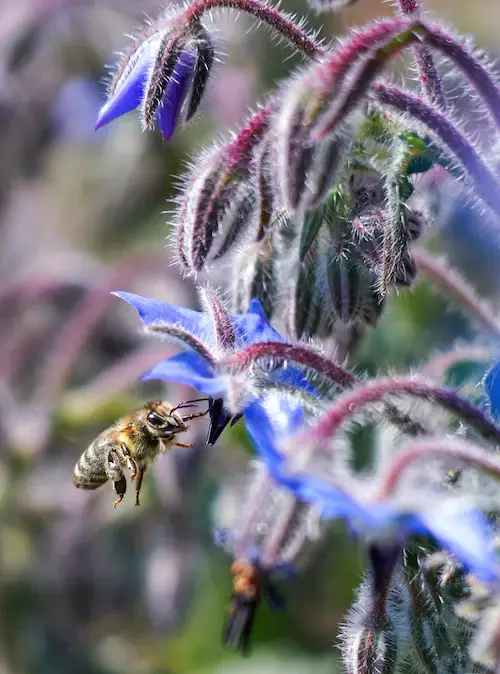
Honey bee swarming is a process by which a colony of honey bees splits into two. It is the natural way in which honeybees reproduce and create new colonies. The process of swarming is a highly organized procedure that begins when the colony becomes overcrowded, signaling to the queen that it is time to reproduce.
The queen and the scout bees will search for a suitable new home, such as a hollow tree, a bee box, or a structure created by humans. Once they have located a suitable spot, the queen and her followers will move to the new location, where they will build a new hive and lay the foundation for a new colony.
Swarming is an important part of honey bee reproduction, as it ensures that the species continues to thrive. It is also an essential part of beekeeping, as beekeepers can capture swarms and relocate them to their apiaries.
5. Behavior of bees in orientation flights and swarming
During an orientation flight, each bee will fly in a calm, circular pattern to explore the area. The bee will fly in a wide circle, slowly increasing its altitude and distance as it goes. The bee uses its senses and memory to gather information about its surroundings, such as the direction of the sun, the type of vegetation, the presence of water, and the location of potential hive sites.
As the bee circles the area, it will eventually return to the hive to share its findings with other bees in the colony. By flying in a calm, circular pattern, the bee can effectively explore the area and collect important information for the colony.
Honey bee swarming is a natural phenomenon that occurs when a colony of bees decides to leave its current hive and search for a new home. This process involves a chaotic flight pattern as the bees search for a suitable location.
When the colony decides to swarm, the worker bees that make up the majority of the colony will leave the hive and fly in a circular pattern. The queen bee will also fly in the same pattern, but she will be surrounded by a large number of guard bees that protect her. The other bees will fly in a chaotic pattern, often making several passes around the hive before taking off in search of a new home.
The bees fly in this chaotic pattern to explore their environment and quickly locate a suitable new home. As they fly, they will be looking for an area with plenty of nectar and pollen sources, as well as protection from the weather and potential predators. Once they find an area that meets their needs, they will send out scouts to investigate further and decide if the area is suitable for a new hive.
6. Participants in orientation flights and swarming
A honey bee orientation flight involves the scout bees of the hive, which are tasked with finding a suitable new home. These scout bees are usually young and inexperienced, and they have to rely on their sense of smell and instinct to locate potential new locations for the hive.
During swarming, the queen bee will fly off with a large group of worker bees in search of a new hive. This group of bees is known as a swarm. The queen bee leads the swarm and is surrounded by a group of scout bees that help her find a suitable site for the new hive.
The scout bees will fly around and search for a location with the right conditions for the colony. When the scouts find a suitable spot, they will report back to the queen bee, who will then lead the swarm to the new location.
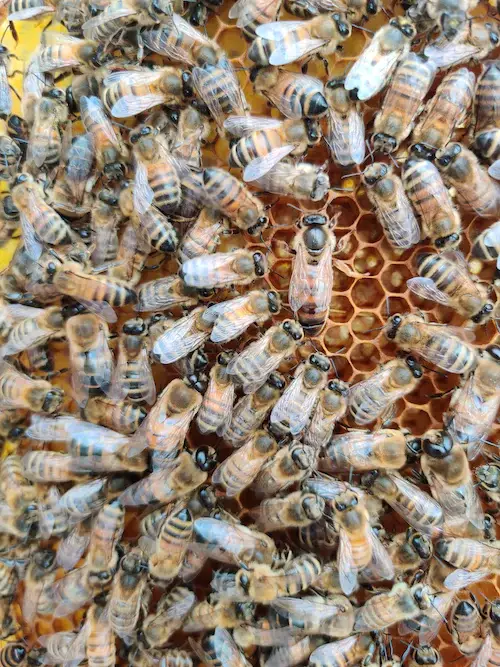
7. Flight path of bees in orientation flights and swarming
Honey bee orientation flights typically occur in a figure 8 pattern, while swarming is focused on finding a new place to build a hive.
Honey bee orientation flights typically occur in a figure 8 pattern. During this type of flight, a bee will fly in a wide loop, first heading in one direction before quickly turning around and returning to its starting point. This looping pattern is believed to be the bee’s way of gathering information about its surroundings.
As the bee flies around its figure 8 pattern, it can take in visual cues from its environment, such as landmarks and the position of the sun. This helps the bee to orient itself and navigate back to its hive.
Honey bee swarming is the process by which a single colony of bees splits in two and each half forms its new colony. During this process, some of the worker bees will swarm around the old queen bee and form a "swarm cloud" which will eventually settle into a new hive or nesting site.
8. Weather conditions in orientation flights and swarming
Orientation flights can occur in all weather conditions, although the bees tend to prefer a sunny day with low winds. This is because the sun provides a reliable reference point for the bee to use when it is navigating, and low winds make the flight easier. Even when conditions are not ideal for the bee, it will still fly to orient itself and gain a better understanding of its environment.
Honey bee swarms typically occur in the late spring and early summer months, when the weather is warm and the flowers are in full bloom.

